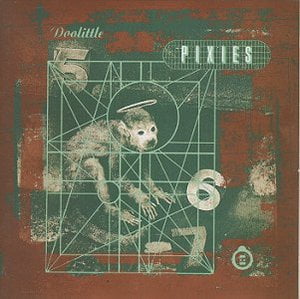These are some recommendations of questions and exercises to help you dive into your sketchbook. Your responses (art or writing) could be done page by page, or take only as much space as is needed. Try to date your sketches or record other information that will make it easier to return to that moment in time. These are presented in no specific order, and you can choose from them methodically or at random. Some will seem more interesting, but be sure to try some that seem less appealing because they will challenge your creativity and skill.
1. Ask yourself what art means to you.
2. Why keep a sketchbook?
3. Draw a value scale. This is usually 9 squares, side by side, running from white to black, with mid-gray in the middle.
4. Make a drawing of something you are wearing that can be removed: jewelry, shoes, glasses, watch, ect.
5. Do some quick studies of the people around you.
6. Draw something you see that is a pattern, like fabric.
7. Find an object of food to draw.
8. Try to diagram the inside of an object, or create a drawing that gives a lot of information, including detailed studies of its parts.
9. Make a drawing emphasizing the basic shapes that make up the subject’s structure.
10. Explore the variety of types of line you can use to draw the same object.
11. Can you change or alter the light source on your subject? Play around with ways to use light to change the mood of your drawing.
12. Do a study of your hand in a variety of poses.
13. Make a record of the color wheel in your sketchbook if you have not done so before. (You should be able to name the complementary colors)
14. Create a drawing using only red and blue. Use the reds to describe objects, or parts of an object that are closest to you. Use the blue to describe objects or parts of an object that recede away from you in space.
15. Make a photocopy of an existing drawing, then cut it up, paste it into the sketchbook and create a new work based on that part.
16. Draw a storyboard to illustrate an idea or as a cartoon.
17. Clip something out of a magazine, and paste it onto one of your pages. Use this as a springboard to draw on top of.
18. On an opposing page, paste something you would like to draw. Attempt to recreate the exact same image on the facing page.
19. Make a drawing inspired by a poem or literature.
20. Make a drawing inspired by a famous work of art.
21. Try to create a volumetric drawing using a ballpoint pen.
22. Do a study of something you see out the window.
23. Make a drawing that is completely non-objective.
24. Attempt to create of work of art that is in a style and of a subject that you like the least.
25. Make a drawing that emphasizes a specific color scheme such as triadic, or complementary.
26. Go through some of your photos at home and use some of these as reference materials for drawing.
27. Create a drawing/collage that uses print to read as value, or vague pattern.
28. Try to create a cubist drawing. The cubists were attempting to describe multiple views of their subjects.
29. Try some drawings while using a timer. You might do several one, two, five, or ten-minute drawings.
30. Make a drawing that combines flat space, and pattern with a dimensional/volumetric subject. (Like Gustave Klimt)
31. Try sketching while watching TV.
32. Create two drawings on opposing pages: one which makes an object dominant in the space, another that makes it feel insignificant.
33. Make a drawing of an animal.
34. Create a self-portrait with objects. The objects could represent you symbolically and/or could be stand-ins for human features.
35. On one page draw one composition, but draw half the page in color, the other in pencil or some other black & white material. When you have finished, photocopy the page to see how well your color choices work as value. Is there a seamless division between the two?
36. Make a drawing that is completely subtractive. Do this by building up a field of value, and then ‘pulling out’ the drawing with your eraser.
37. Use a page to make a record of some logos or symbols you see around you.
38. Make a drawing of something small, like a pushpin or a penny.
39. Make a drawing from an object in your purse or book bag.
40. Try drawing a building and some of its architectural details.
41. Take an unusual perspective of your object; place it up high or down low.
42. Try to draw a large stack of books.
43. Create a drawing that is predominantly dark (or predominantly light).
44. Make a drawing that is monochromatic.
45. Draw a figure from your imagination.
46. Open a closet or cabinet and draw what is stored inside.
47. Write down what you feel about the subject. What is interesting about it to you? Does the drawing convey that? Ask somewhat what they see in the drawing.
48. Do some blind-contours to strengthen your mind/hand connection.
49. Draw the same subject twice? Was it easier the second time? Record the length of time spent on each and make an assessment of which is more successful.
50. Brainstorm five more ideas to add to this list!





